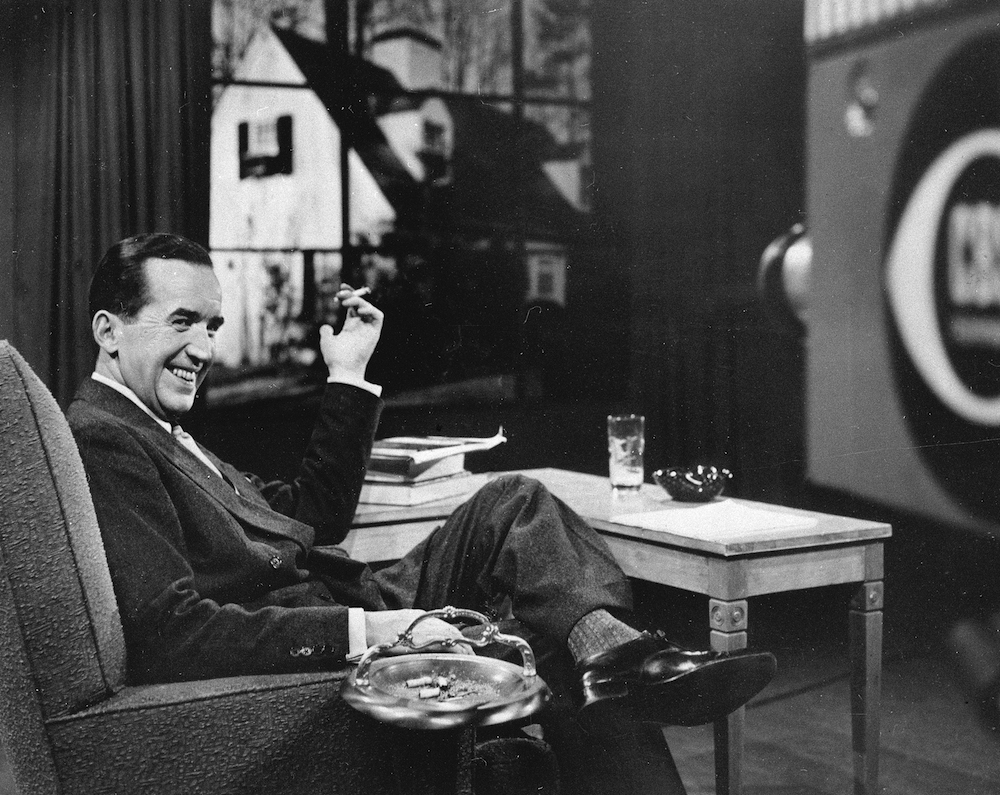On March 9, 1954, Edward R. Murrow and his CBS news program, “See It Now,” examined Senator Joseph McCarthy’s record and anti-communist methods.
The program is often remembered for these words:
“We will not walk in fear, one of another. We will not be driven by fear into an age of unreason, if we dig deep in our history and our doctrine, and remember that we are not descended from fearful men — not from men who feared to write, to speak, to associate and to defend causes that were, for the moment, unpopular.
This is no time for men who oppose Senator McCarthy’s methods to keep silent, or for those who approve. We can deny our heritage and our history, but we cannot escape responsibility for the result. There is no way for a citizen of a republic to abdicate his responsibilities. As a nation we have come into our full inheritance at a tender age. We proclaim ourselves, as indeed we are, the defenders of freedom, wherever it continues to exist in the world, but we cannot defend freedom abroad by deserting it at home.
The actions of the junior Senator from Wisconsin have caused alarm and dismay amongst our allies abroad, and given considerable comfort to our enemies. And whose fault is that? Not really his. He didn’t create this situation of fear; he merely exploited it — and rather successfully. Cassius was right. ‘The fault, dear Brutus, is not in our stars, but in ourselves.’
Good night, and good luck.”
A new generation of viewers were introduced to Edward R. Murrow and “See It Now” in the 2005 film, “Good Night, and Good Luck.” But many watched the original program on the evening of March 9, 1954:
(Here are links to the full “See It Now” program and transcript.)
“Murrow produced a number of episodes of the show that dealt with the Communist witch-hunt hysteria (one of the more notable episodes resulted in a U.S. military officer, Milo Radulovich, being acquitted, after being charged with supporting Communism), before embarking on a broadcast on March 9, 1954 that has been referred to as television’s finest hour.
By using mostly recordings of McCarthy himself in action interrogating witnesses and making speeches, Murrow and Friendly displayed what they felt was the key danger to the democracy: not suspected Communists, but McCarthy’s actions themselves.”
— “See It Now: Senator McCarthy”
Archive of American Television

Screenshot from the PBS American Masters program, “This Reporter”
In 1990 CBS correspondent Charles Kuralt and the PBS American Masters series profiled the career of Edward R. Murrow. Here are links to videos of part one and part two.
“See It Now (1951-57), one of television’s earliest documentary series, remains the standard by which broadcast journalism is judged for its courage and commitment. The series brought radio’s premier reporter, Edward R. Murrow, to television, and his worldly expertise and media savvy helped to define television’s role in covering and, more importantly, analyzing the news.
….Although See It Now relied on CBS correspondents abound the world, Murrow, serving as editor-in-chief, and (Fred) Friendly, as managing editor, organized the first autonomous news unit, whose ranks included reporter/producers Joe Wershba and Ed Scott; director Don Hewitt; production manager Palmer Williams; and former newsreel cameramen Charlie Mack and Leo Rossi.
….Murrow and Friendly invented the magazine news format, which became the dominant documentary form on network television.”
— “See It Now”
Museum of Broadcast Communications






